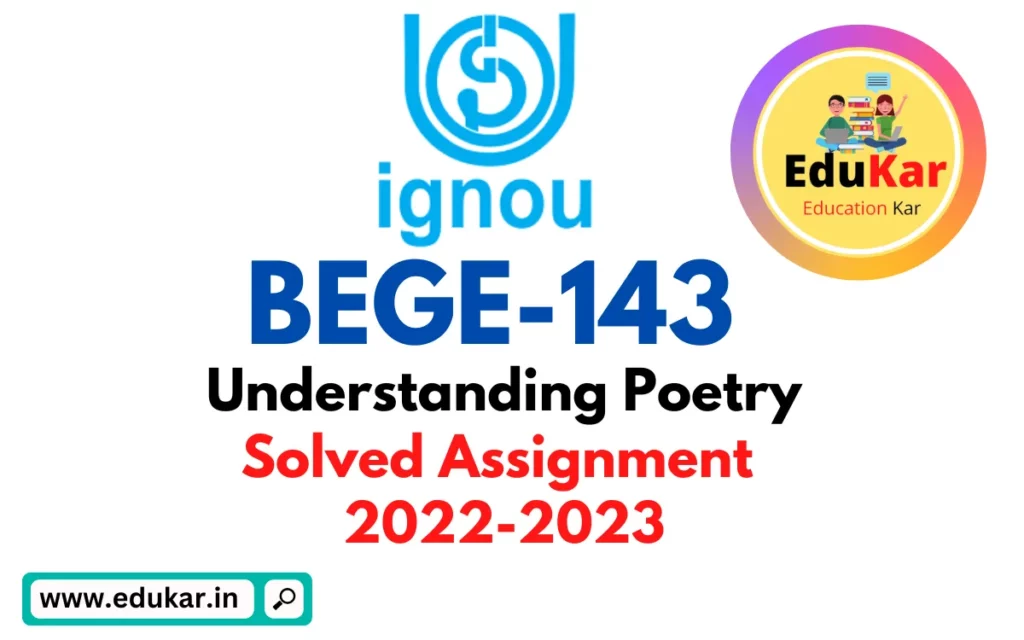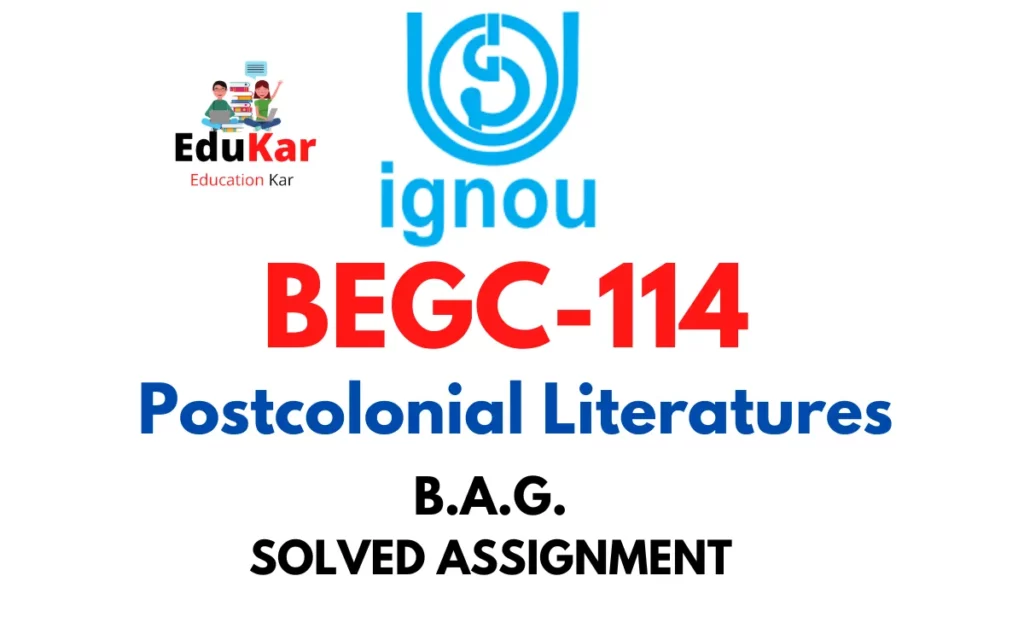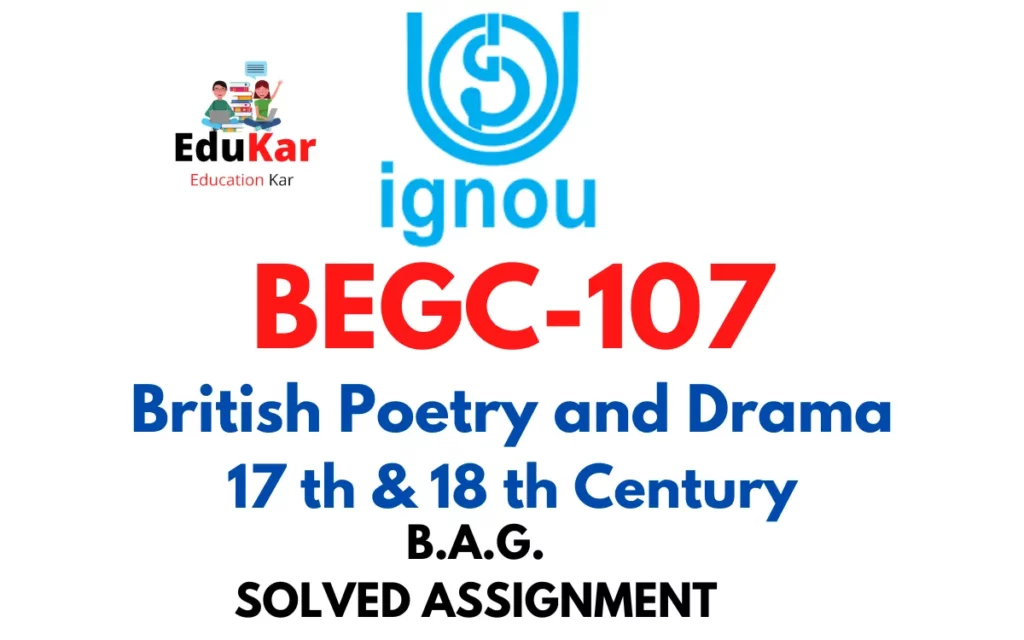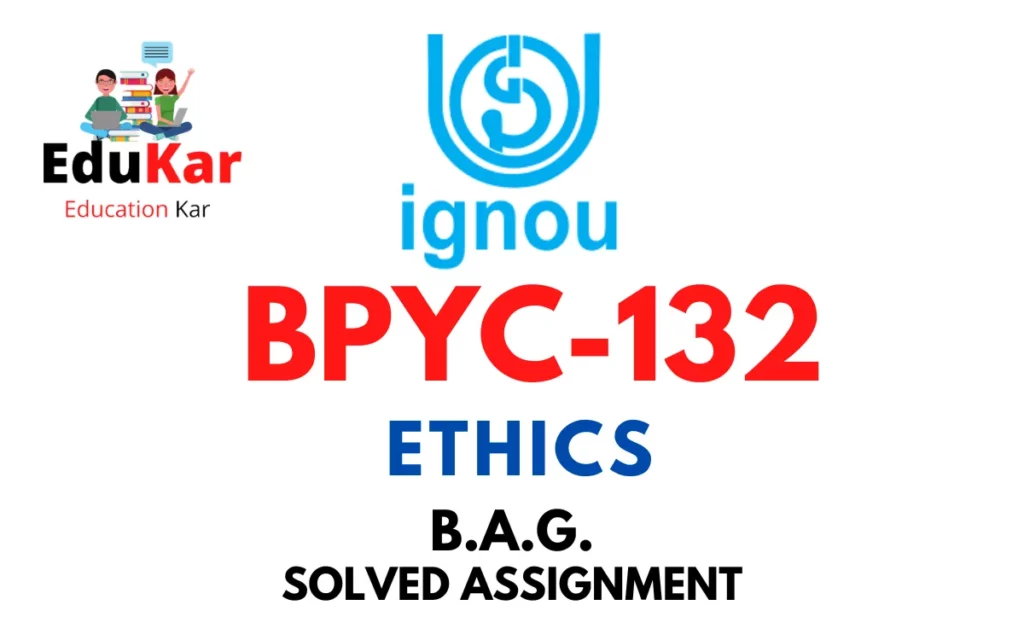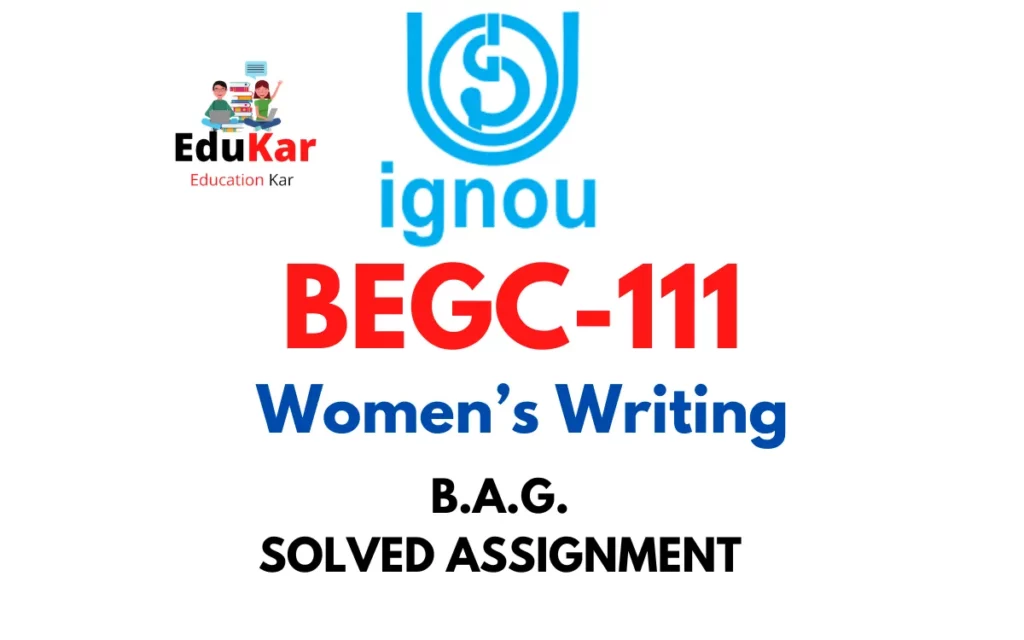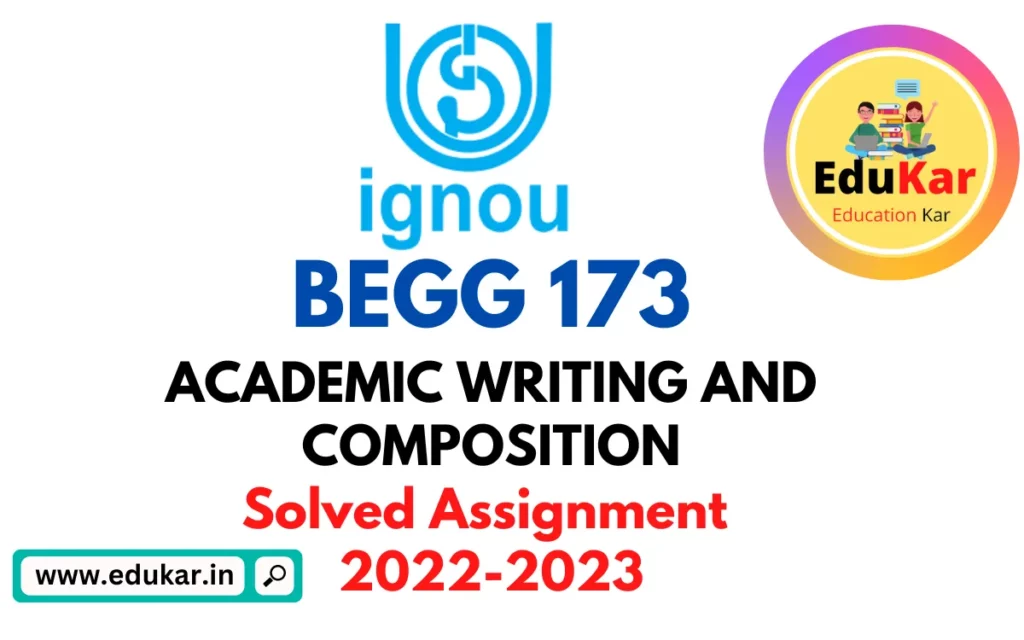Contents
- 1 Section A
- 2 Explain the following with reference to the context:
- 3 Section B
- 4 Write short notes on the following:
- 5 5. Single Indian literary culture amongst several languages.
- 6 6. Hindi/Hindavi.
- 7 Section C
- 8 7. How do Dalit narratives tell the stories of an entire community? Elaborate.
- 9 8. What do women’s texts say about a woman’s life? Illustrate.

| Title | BEGC 132: IGNOU BAG Solved Assignment 2022-2023 |
| University | IGNOU |
| Degree | Bachelor Degree Programme |
| Course Code | BEGC 132 |
| Course Name | Selections from Indian Writing: Cultural Diversity |
| Programme Name | Bachelor of Arts (General) |
| Total Marks | 100 |
| Year | 2022-2023 |
| Language | English |
| Last Date for Submission of Assignment: | For June Examination: 31st April For December Examination: 30th September |
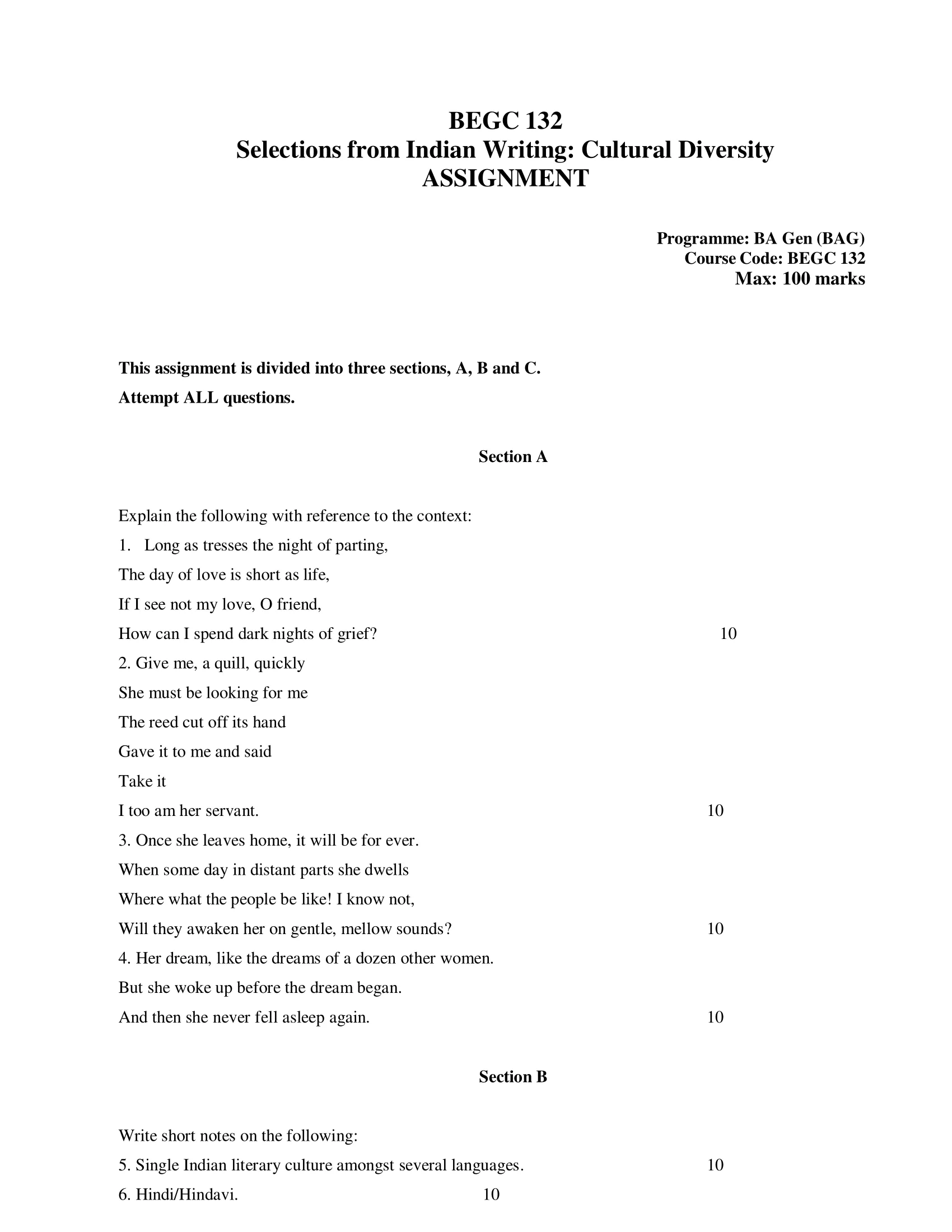

Section A
Explain the following with reference to the context:
1. Long as tresses the night of parting,
The day of love is short as life,
If I see not my love, O friend,
How can I spend dark nights of grief?
Ans: The above lines are a poetic expression of the speaker’s feelings of longing and sadness caused by being separated from their love. The speaker compares the long nights of sorrow to the length of the hair, indicating the extent of their sadness. The speaker also contrasts the short duration of their love to the brevity of life itself. The speaker is unable to find comfort in the absence of their love and wonders how they will endure the dark nights of grief.
2. Give me, a quill, quickly
She must be looking for me
The reed cut off its hand
Gave it to me and said
Take it
I too am her servant.
Ans: The above lines are a metaphorical description of the speaker’s desire to write and communicate with their beloved. The speaker asks for a quill, indicating their urgency to write and express their feelings. The speaker believes that their beloved is searching for them and wants to reach out to her. The metaphor of a reed cutting off its hand and giving it to the speaker symbolizes the reed’s willingness to serve and assist the speaker in their desire to write. The reed says it too is a servant of the beloved, suggesting a shared devotion to her.
3. Once she leaves home, it will be for ever.
When some day in distant parts she dwells
Where what the people be like! I know not,
Will they awaken her on gentle, mellow sounds?
Ans: The above lines are a reflection on the speaker’s concern about the future of their beloved after she leaves home. The speaker laments that once she leaves, she will be gone forever. The speaker wonders about the people and the place where she will live in the future, imagining that they may be kind and gentle to her. The speaker wonders if the new surroundings will awaken her with mellow sounds, suggesting a peaceful and harmonious existence. The lines express a sense of uncertainty and concern for the well-being of the beloved after she leaves home.
4. Her dream, like the dreams of a dozen other women.
But she woke up before the dream began.
And then she never fell asleep again.
Ans: The above lines describe the protagonist’s experience of having a dream that was similar to the dreams of many other women. However, she woke up before the dream could take hold and did not fall asleep again. This could symbolize a sense of restlessness or unease that the protagonist feels, preventing her from sleeping and possibly suggesting that her dream was not fulfilling or meaningful. The lines could also suggest that the protagonist is seeking something more in life and is unable to find it in her current circumstances. The dream and its interruption could represent the protagonist’s search for a more fulfilling existence.
Section B
Write short notes on the following:
5. Single Indian literary culture amongst several languages.
Ans: Single Indian Literary Culture among Several Languages:
- India is a country with a rich and diverse cultural heritage, and this is reflected in its many languages and dialects.
- Despite this linguistic diversity, there is a strong underlying cultural continuity that transcends regional and language barriers.
- This continuity is evident in the presence of a shared literary culture, which encompasses the works of writers from different regions and languages, but still reflects common themes and values.
- This single Indian literary culture serves as a unifying force, bringing together writers and readers from diverse backgrounds, and promoting a sense of national identity and cultural unity.
- Examples of works that are part of this shared literary culture include the epics “Ramayana” and “Mahabharata,” the poetry of Kalidasa, and the devotional hymns of the Bhakti movement.
These notes highlight the existence of a single Indian literary culture that transcends linguistic boundaries and contributes to the country’s cultural unity.
6. Hindi/Hindavi.
Ans: Hindi/Hindavi:
- Hindi is one of the official languages of India and is widely spoken across the country.
- It is a member of the Indo-Aryan branch of the Indo-European language family and is written in the Devanagari script.
- The origins of Hindi can be traced back to the medieval period, when it developed as a dialect of the Sanskrit language. Over time, it evolved into a distinct language, incorporating elements from Persian and Arabic.
- Hindi is the third most widely spoken language in the world, after Mandarin and Spanish.
- Hindavi refers to an older form of Hindi that was used in the northern regions of India before the emergence of modern Hindi. This form of the language was heavily influenced by Sanskrit and Persian and is considered an important part of the development of Hindi.
These notes provide a brief overview of the Hindi language and its origins. They also mention Hindavi, an older form of the language that played a significant role in its development.
Section C
7. How do Dalit narratives tell the stories of an entire community? Elaborate.
Ans: Dalit narratives are stories and experiences told by members of the Dalit community, formerly known as “Untouchables,” who have been subjected to centuries of caste-based discrimination and oppression in India. These narratives serve as a powerful tool for Dalits to reclaim their history and identity, challenge dominant narratives and promote social justice.
Dalit narratives are unique in the way they represent the collective experiences and struggles of an entire community. They are often told in a language that is accessible to the wider public and serve as a means of educating people about the history of oppression and marginalization faced by Dalits. They also provide a powerful voice to those who have been marginalized and excluded from mainstream narratives and discourse.
One of the key themes in Dalit narratives is the struggle for dignity and equality. Dalits have been subjected to dehumanizing treatment for centuries and have been denied basic human rights and opportunities. Through their narratives, they assert their dignity and demand equality and respect. They also challenge the caste-based hierarchy and call for the elimination of the caste system.
Another important theme in Dalit narratives is resistance. Dalits have not only suffered from caste-based discrimination but have also organized and resisted against it. Dalit narratives highlight their struggles and resistance, including their political and social movements, and provide a historical context for these movements. They also serve as a source of inspiration for current and future generations of Dalits, who can see how their predecessors fought for their rights and dignity.
Dalit narratives also play an important role in promoting self-reflection and introspection within the community. They challenge the internalized caste-based discrimination and help to promote a sense of unity and solidarity among Dalits. They also provide a platform for marginalized individuals to share their experiences and assert their identity.
8. What do women’s texts say about a woman’s life? Illustrate.
Ans: Women’s texts, such as diaries, letters, memoirs, and novels, offer unique insight into the lived experiences of women and provide a glimpse into their thoughts, feelings, and struggles. They shed light on the complex and diverse ways in which women have navigated the world and have been shaped by the historical, social, and cultural contexts in which they lived.
One of the key themes in women’s texts is the struggle for agency and autonomy. Many women have faced constraints on their freedom, including limited access to education and employment, as well as restrictions on their personal lives, such as marriage and motherhood. Women’s texts often document these struggles and the strategies that women have used to assert their independence and agency. They also reveal the ways in which women have challenged traditional gender roles and pushed for greater equality and freedom.
Another important theme in women’s texts is the complexities of relationships, particularly those between women and men. Women’s texts often provide insight into the dynamics of romantic relationships, including the negotiation of power and the balancing of emotional needs. They also explore the relationships between mothers and daughters, sisters, and friends, revealing the ways in which women have supported and cared for each other, as well as the conflicts that have arisen.
Women’s texts also highlight the emotional experiences of women. They provide a window into the joys, fears, and sorrows that women have experienced throughout their lives. For example, diaries and letters often document the innermost thoughts and feelings of women, providing insight into the emotional impact of events such as childbirth, death, and war. Women’s texts also provide a rich source of data on the experience of mental health, including depression, anxiety, and other emotional struggles.
How to Download BEGC-132 Solved Assignment?
You can download it from the www.edukar.in, they have a big database for all the IGNOU solved assignments.
Is the BEGC-132 Solved Assignment Free?
Yes this is absolutely free to download the solved assignment from www.edukar.in
What is the last submission date for BEGC-132 Assignment?
For June Examination: 31st April, For December Examination: 30th October


